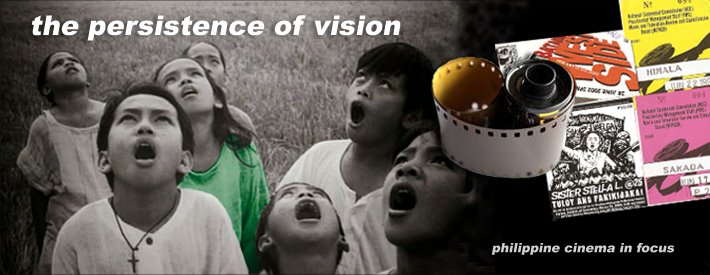 Tasked to create a short film for an omnibus project of the Jeonju International Film Festival (JIFF), Lav Diaz came up with the 59-minute film, Butterflies Have No Memories. He is always pushing his films to the limit. A minute more and it would no longer have been considered a short film. However, the JIFF organizers trimmed it down to 40 minutes in order to make it fit in with two other short films. The longer version is available in the DVD box set released by JIFF.
Tasked to create a short film for an omnibus project of the Jeonju International Film Festival (JIFF), Lav Diaz came up with the 59-minute film, Butterflies Have No Memories. He is always pushing his films to the limit. A minute more and it would no longer have been considered a short film. However, the JIFF organizers trimmed it down to 40 minutes in order to make it fit in with two other short films. The longer version is available in the DVD box set released by JIFF.In the extremely loaded film Butterflies Have No Memories, a bearded man named Ferdinand ‘Pedring’ Belleza is yearning for the return of mining in his town. He worked as chief security officer of a multinational mining company for decades. When it closed down, he lost a well-paying job, as well as his family.
The long-legged beauty Martha is a scion of the mining owners. The family closed the mining company after toxins heavily polluted the river. Their hasty departure turned the former prosperous place into a ghost town.
The return of fair-skinned Martha fuels irritations among local residents. She is likened to the so-called snow from Canada (mine tailings) that triggers skin rashes among the residents. Her former playmates, Carol and Willy, no longer have time to accommodate the young Canadian lady. They are so busy doing household chores or eking out a living. It is ironic that Martha, named after the Biblical character known for her hospitality, is treated badly during her visit.
There is a tinge of envy for the rich, single, and carefree visitor. Some people are more hostile. Pedring hatches a plan to kidnap Martha. His love for money reigns supreme over memories of good times with the family of Martha.
The short film alludes to the destructive effects of mining in Marinduque. Mine tailings caused the biological death of Boac River in 1996. The mining company left the place after decades of operations. Subsequent proposals to re-open the mining site are repelled by the Church and environmentalists.
The hellish effects of mining/treasure hunting were earlier tackled by Diaz in his majestic epic story Ebolusyon Ng Isang Pamilyang Pilipino. A female character from the film admonishes her husband to give up mining. 'It is hell,' said the sight-impaired woman. Indeed, the mining area became a burial ground for gold prospectors and treasure hunters. Diaz will return once more to the issue of treasure hunting in a film project titled Agonistes.
Butterflies Have No Memories contains elements one would expect from a Lav Diaz film. Shot in bleak monochrome, the abbreviated film includes a couple of long takes. The lush ambient sound is also here along with scenes featuring animals/insects. I always look forward to the last two elements, ambient sound and inclusion of animals. They play a big part in making Diaz’s films so natural and realistic.
What I didn’t expect is the peculiar, dream-like ending. It features three adult men donning Moriones masks. Their epiphanic encounter with a swarm of butterflies triggers a change of heart for one of them. The sublime last shot is that of a prostrated young man in the middle of the forest while a pair of Roman soldiers looks on.
Lav Diaz is truly a great filmmaker and storyteller, equally adept with short features and epic stories. Butterflies Have No Memories is his best short film so far and one of his most symbol-laden films. It is a wonderful amalgam of mundane and insane images.










